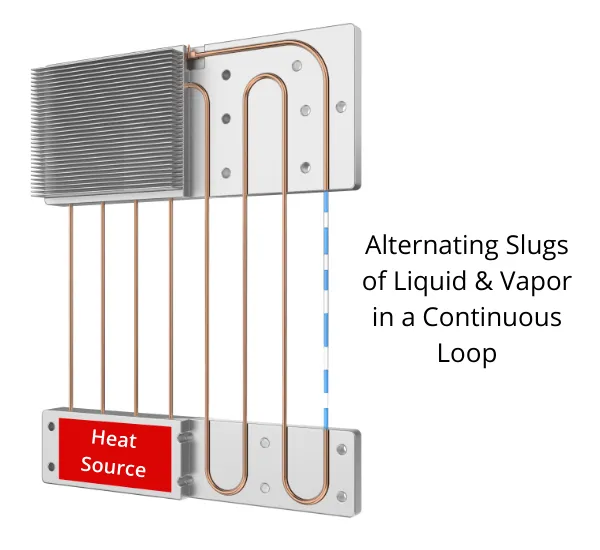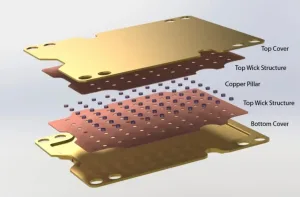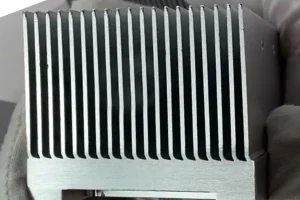Oscillating and Pulsating Heat Pipes
Key feature
- Snake-like coiled thin pipe structure
- No capillary structure
- Rely on bubble pulsation to drive the movement of the working medium
- The working process has oscillatory characteristics

Oscillating

Pulsating Heat Pipes
The Oscillating Heat Pipe (OHP) is characterized by a unique serpentine channel design, where the internal working fluid forms discrete liquid slugs and vapor bubbles under temperature gradients. These slugs and bubbles oscillate reciprocally between the hot and cold ends, enabling heat transfer through pulsating motion.
While this design offers structural simplicity and low manufacturing costs, its heat transfer mechanism is inherently complex. The start-up capability and thermal performance of OHPs are governed by multiple factors, including channel geometry and filling ratio. For instance:
Smaller channels amplify surface tension effects, which can suppress fluid oscillation.
Larger channels risk fluid stratification, diminishing pulsation efficiency.
Despite these challenges, OHPs represent a pioneering exploration in heat pipe technology, emphasizing simplified architectures over traditional capillary-driven systems. Their potential lies in applications requiring passive cooling with minimal complexity, such as electronics thermal management or renewable energy systems.



